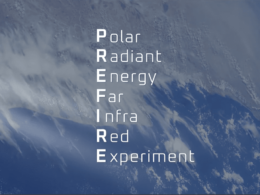Fueled by Canada’s warmest and driest conditions in decades, the extreme forest fires of 2023 released approximately 640 million metric tons of carbon, according to NASA scientists. This emission level is comparable to the annual fossil fuel emissions of a large industrialised nation. This study, funded by NASA, is part of its ongoing efforts to understand our changing planet.
The research team used satellite data and advanced computing to measure the carbon emissions from fires that scorched an area roughly the size of North Dakota between May and September 2023. The study, published in the journal ‘Nature’ was led by scientists from NASA’s Jet Propulsion Laboratory in Southern California.
The findings revealed that the carbon released by the Canadian fires in just five months exceeded the total fossil fuel emissions of Russia or Japan for the entire year of 2022 (approximately 480 million and 291 million metric tons, respectively). While both wildfire and fossil fuel emissions immediately contribute to warming, there is a key difference: as forests regenerate, the carbon from wildfires will eventually be reabsorbed by Earth’s ecosystems, whereas CO2 from fossil fuels is not easily offset by natural processes.
The European Space Agency’s TROPOspheric Monitoring Instrument (TROPOMI), aboard the Sentinel 5P satellite since 2017, monitored the fire plumes over Canada. TROPOMI uses four spectrometers to measure and map trace gases and aerosols in the atmosphere.
The scientists began with the observed levels of carbon monoxide (CO) in the atmosphere during the fire season and then calculated the emissions required to produce those levels of CO. By analysing the ratios of CO to CO2 in the fire plumes, they estimated the total CO2 released.
“What we found was that the fire emissions were bigger than anything in the record for Canada. We wanted to understand why” said Brendan Byrne, a JPL scientist and lead author of the new study.
Wildfires play a crucial role in maintaining forest health by clearing undergrowth and allowing new plant life to flourish. However, in recent decades, the frequency, severity, and size of wildfires have increased, according to the US Department of Agriculture. Factors such as prolonged drought, past fire management practices, invasive species, and expanding residential areas contribute to this trend.
To explain the intensity of Canada’s 2023 fire season, the study’s authors pointed to the extremely dry and warm conditions. Climate data indicated it was the warmest and driest fire season since at least 1980. In the northwest part of the country, where 61% of the fire emissions occurred, temperatures were over 4.5 degrees Fahrenheit (2.6 degrees Celsius) above average from May to September, with precipitation more than 3 inches (8 centimeters) below average for much of the year.
These conditions contributed to the fires’ enormous size and widespread nature, burning approximately 18 million hectares of forest from British Columbia to Quebec and the Atlantic provinces. This burned area was over eight times the 40-year average and represented 5% of Canada’s forests.
“Some climate models project that the temperatures we experienced last year will become the norm by the 2050s. The warming, coupled with lack of moisture, is likely to trigger fire activity in the future,” Byrne said
If events like the 2023 Canadian forest fires become more common, they could have significant implications for global climate. Canada’s vast forests serve as a major carbon sink, absorbing more CO2 from the atmosphere than they release. The scientists cautioned that it remains uncertain whether Canadian forests will continue to absorb carbon at their current rate or if rising fire activity could diminish their capacity to mitigate climate warming.






















